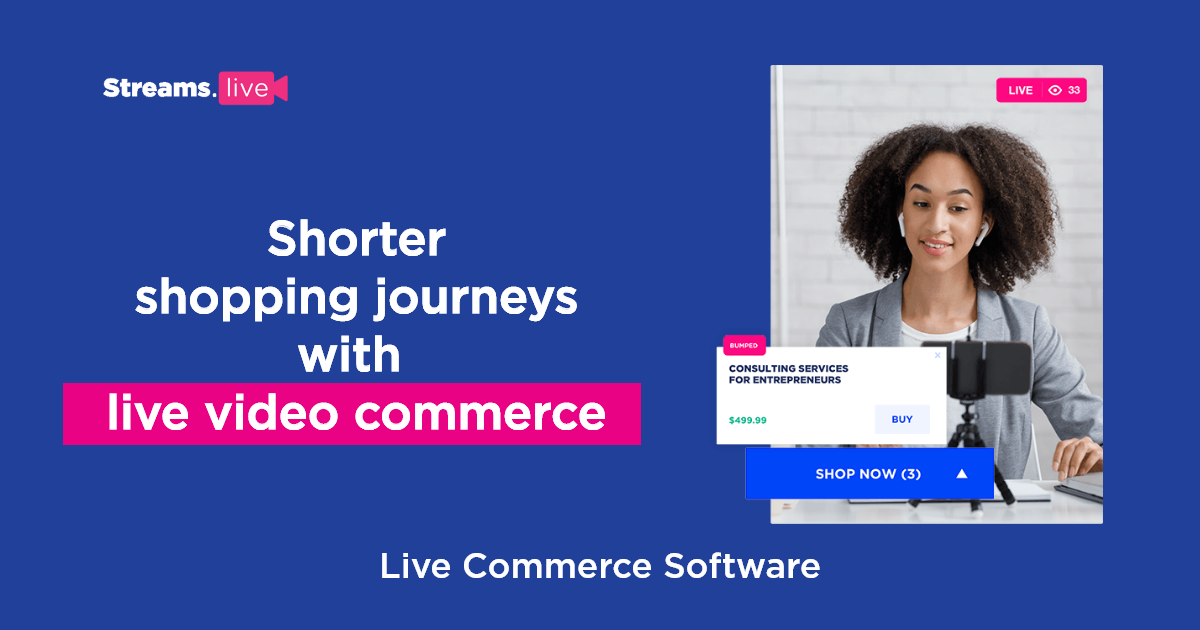
In this article, we are going to see how businesses can create shorter purchasing journeys with the help of live video commerce. Commonly, brands use live or prerecorded videos to create awareness around their products and services. And it works like a charm, as video has the power to engage potential customers like no other form of content.
However, there’s a new kid on the block. It’s called live stream shopping and has the power to increase your conversion rate by taking customers through different stages of the purchasing journey in one go.
The shopping journey
A purchase is rarely a one-step process. It is a complex process in which the customer goes from the problem to the best solution that will fix it. It’s actually a journey, a long series of small decisions that brings us to the final one. However, the process can be broken into different major steps, based on their place in the sales funnel. And this helps us better understand what are the customers’ intentions, how close are they to actually make a purchase, and how we can support them throughout this process.
Today we will approach the purchasing journey from a broader perspective, and we will look at three main stages from the customer buying journey: Awareness, Consideration, and Decision, and how Live Video Shopping helps you customers moving from one stage to another.
But first, let’s take a better look at each of these stages.
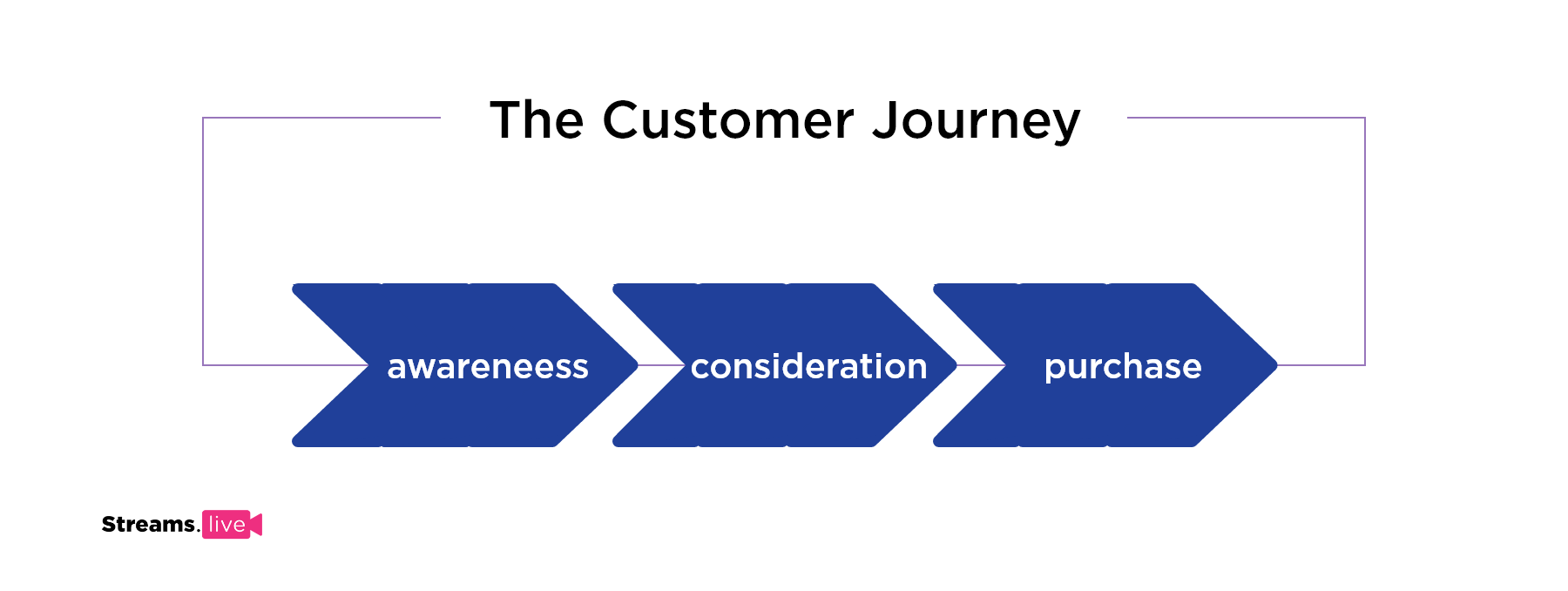
The Awareness stage
This is the moment when, as the name says, customers become aware of your products or services. This is the moment when they realize they (may) have a problem, although some problems are more obvious than others. For example, let’s say I just had an accident with my bike. I have an obvious problem and I need to replace it with a new device as the damage is unrepairable (don’t worry, I am fine). So I became aware of my problem and start actively looking for a solution.
Watch a video of this post here:
On the other hand, many businesses realize that they have a problem as customers moved away from brick-and-mortar stores. They know that there must be a better alternative to engage customers online than traditional eCommerce, so they start looking for it. They find our website and they see how Live Stream Shopping can help them better connect with their customers. At this moment, they become aware of our solution and try to better understand how to onboard the solution into their activity.
But let’s get back to the first example and use it throughout this whole article. You have a digital store that sells bicycles. And of course, not all of your customers are as clumsy as me, so you cannot make a living from customers that look to replace their broken equipment. As your customers are generally doing researches before making a purchase, you try to interact with them as early as they enter the buying journey. At this point, you just need to make them aware that there is a solution to their problem.
You identified several buyer personas from your audience. One of them consists of young professionals that use bicycles on a daily basis, mostly for their commute.
So you start creating content for this type of potential customers. You publish blog posts like “X benefits of cycling to work” and “how daily cycling improves your health”. Short videos and Infographics focusing on “top X alternatives for your daily commute” will help you raise awareness around the problem. Social media tools are also great to create awareness around your brand.
This way, young people that may be looking for an alternative to public transportation will land on your website, will see the solution to their problem, and start considering your products.
At this stage, live stream shopping is something that intrigues potential customers, making them curious to see what they can gain from a live session.
The Consideration Stage
Now that potential customers understand that there is a solution to their problem, they start evaluating their options. Their start researching not only the product (bicycles) that suits their needs but also the best store that can accommodate that.
The consideration stage in the purchasing funnel is the one where customers search for as much information as they can possibly find. And after you helped them identify the problem, it is now time to convince them that you are worthy of being shortlisted as a potential solver of this problem. The goal is to be as helpful and as informative as possible.
As this is not the final step in the journey, the goal is not to aggressively push your products, but rather to show that your products or services are the best solutions for them. It’s also where they analyze you as a business, not just your products. It’s where the authenticity of your brand will make or break the deal, as 90% of consumers say authenticity is an important factor when deciding to support a particular business.
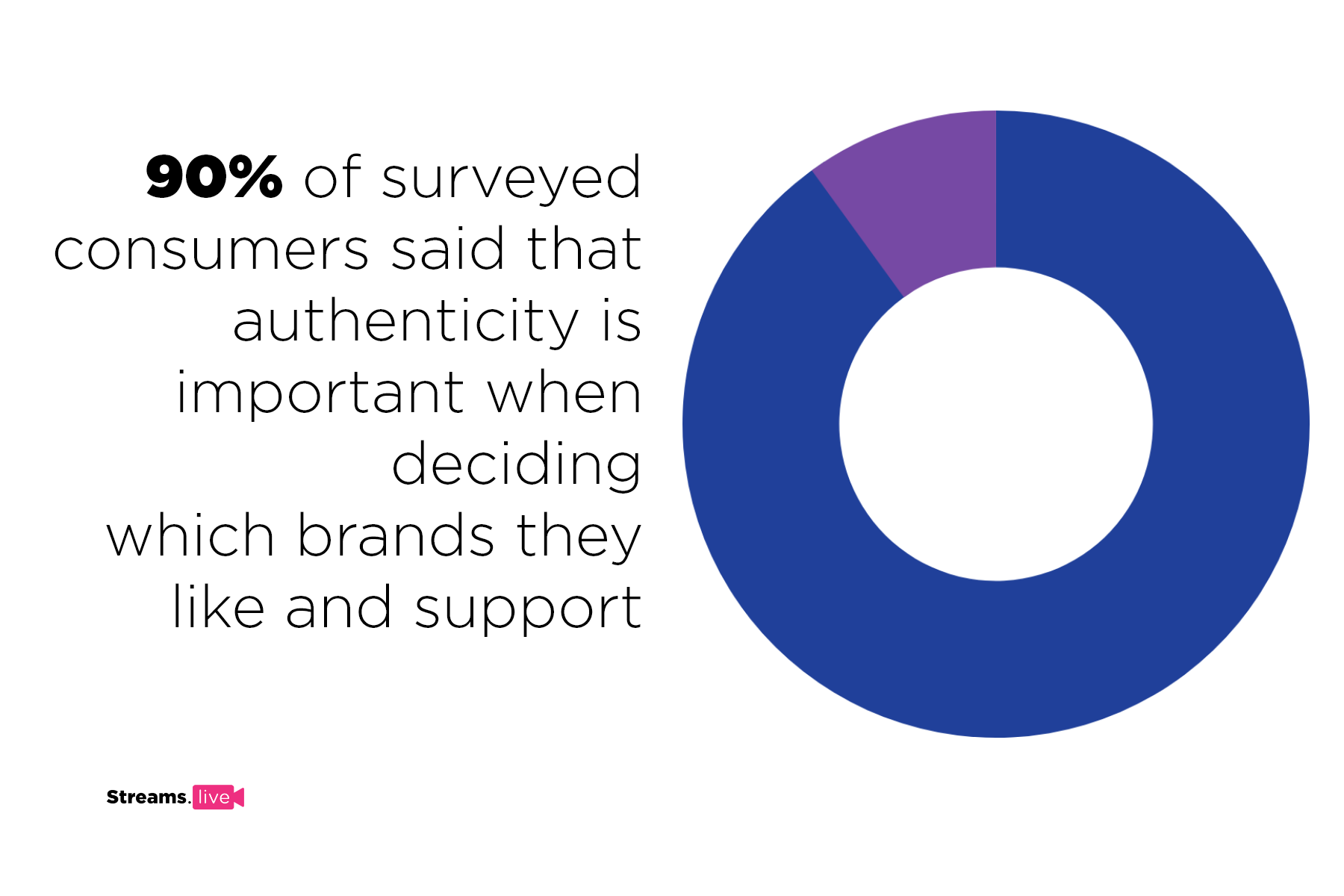
Following our example, you can now go further and offer detailed information on what are the main benefits and prices of different Commute Bykes. You can provide studies on the impact this transportation method has on the community and adopters, testimonials from customers that choose to do business with you, and comprehensive analysis of different models. As two commutes are (almost) never the same, different customers will look for different benefits.
Traditionally, at this stage content is often shared as whitepapers, case studies, webinars, and podcasts, or testimonials. Later on, we will see how live video commerce helps customers get a better understanding of your business and products and how this innovative way of commerce is improving the customer journey.
The Purchase Stage
At this moment, customers have an exact understanding of what they need (or want). It’s time to seal the deal. You just need to make clear what is the added value that you bring to the table. Reports show that ¾ of deals go to the company that moved first in showing the added value.
Based on the research conducted in the second stage of the process, the purchase may look like an impulse. And sometimes it really is. But here is where small details can make the difference, and often clients have a very short list with possible options stuck in their mind. They identified the problem, saw the solution for it, and now they are just deciding where to take their business. They have just 2 or 3 options in their mind and the one that makes a good move wins.
Here is where answering on the spot a late question, offering a small discount, or having a smoother buying process will make the difference. Or better, clearer call to action. And this is what will make it seem like impulsive buying, even if this is actually part of a longer, well-documented process.
In this stage, live stream shopping has no real competition, as businesses using it saw up to 5 times increases in conversion rates. Let’s see why.
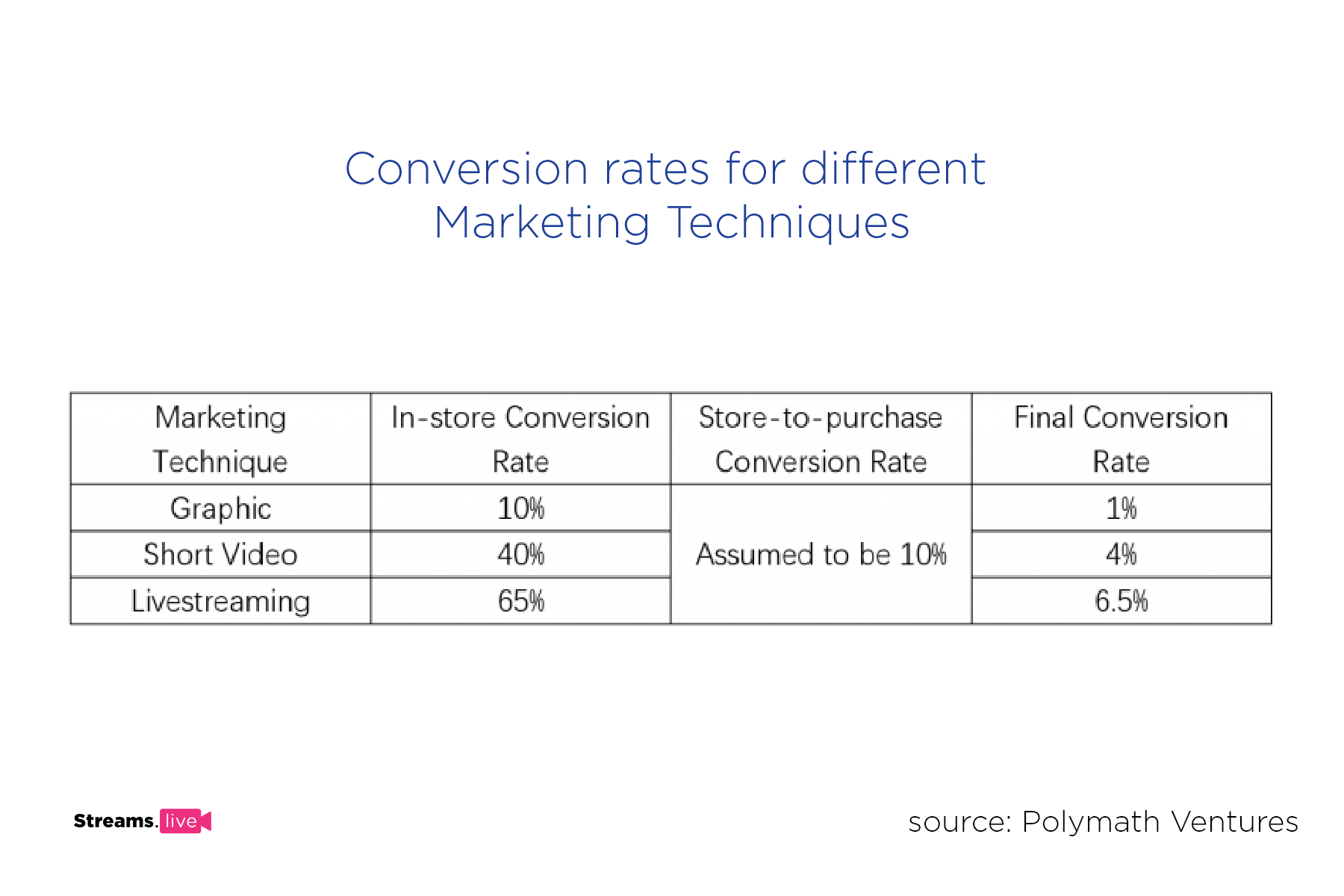
Shortening the shopping journey with video commerce
The success that live video commerce sees is not random. This new way of shopping finds itself at two crucial intersections.
On one side, live stream shopping is the digital experience closest to in-store buying. It takes the best from both traditional and electronic commerce. You have a real person showcasing a product and answering your questions, just like when shopping brick and mortar. Yet, you are taking part in this experience from the comfort of your home and you are just one click away from purchasing the products and having them delivered to your doorsteps.
The same live commerce experience is actually a combination of shopping and entertainment. No wonder it’s so often called Shoppertainment, as it does exactly this: it allows people to buy while watching something that resembles more to an exciting show than to anything else.
Live Stream Shopping makes it easier for customers to walk through these 3 stages of the shopping journey in one go. How?
Awareness through live video commerce
The awareness stage is the one where customers first find about business. At that time, they know that they want to make a change – the problem just became obvious and they started having a better understanding of it.
Let‘s move this into the same dimension as the above example. We have Dwight, a young man that feels that public transportation is not the option for his daily commute to work. He knows that some of his colleagues use bikes to get to the office, he likes the idea, but he is basically brand new to the subject.
Here is when potential customers first interact with your content and your brand/business. But what if, at the end of the article, they find a link that invites them to your next live stream shopping session? If they are indeed interested in what you are offering, they will definitely be interested in seeing you talking live about it. After all, live video generates 300% more time watching live videos than any other form of video. And this live experience starts, clients will find themselves in the shopping journey, one that is on fast forward.
Consideration through live video commerce
Once the live stream shopping experience starts, it will be easy to move your viewers from the awareness stage to consideration. You can go live in from of them showcase the products just like they are standing right in front of you. This is the moment when customers try to get as much information as possible and you and your team are right there to help them.
One of the benefits of live video commerce is that you can answer your viewers’ questions on the spot. 85% of online shoppers say they have at least one question they need to find an answer to before actually making a purchase. If you can provide that answer you are one step closer to closing the deal. And what an important step this is.
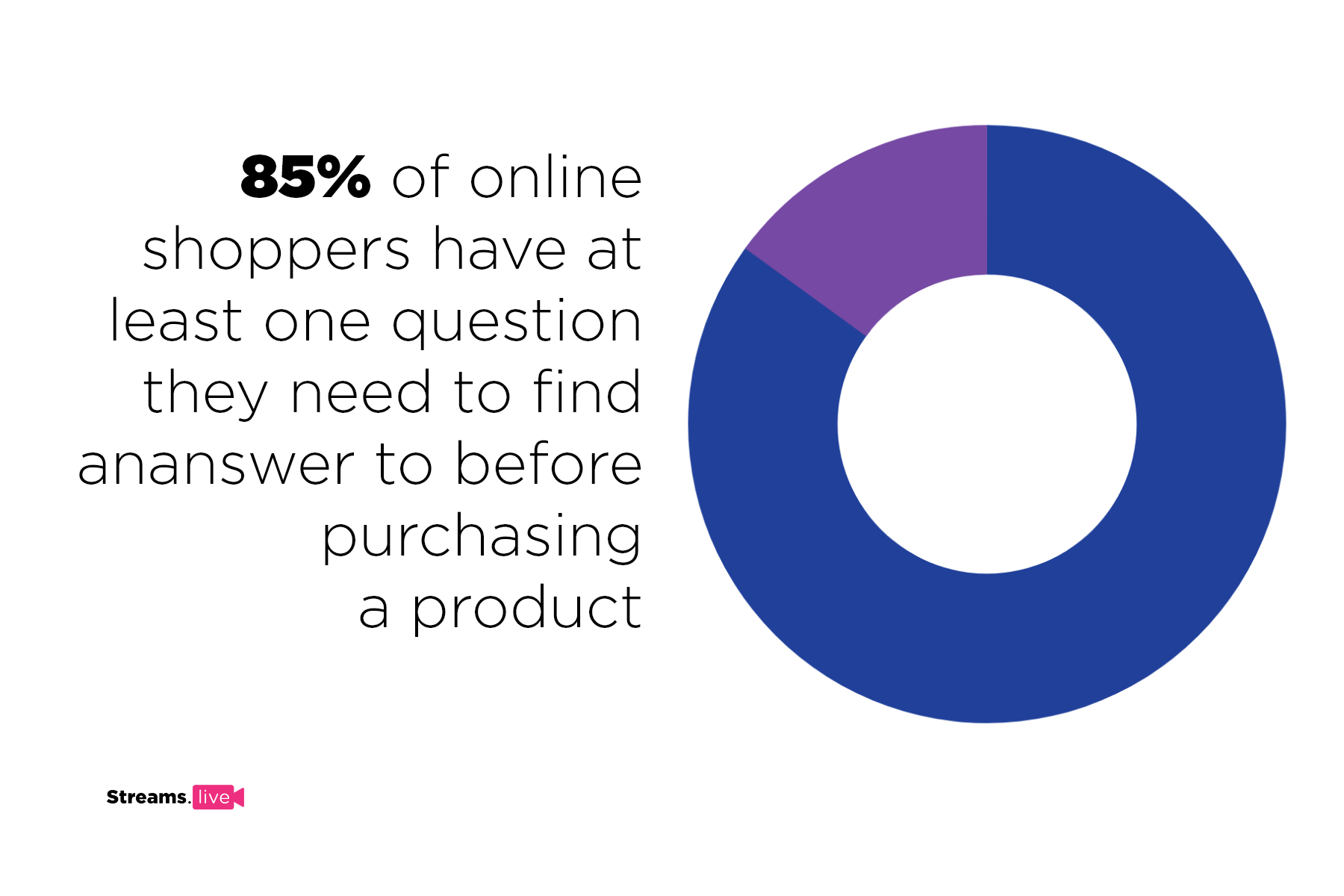
So Dwight feels that a live stream shopping session would the best way to find what bike would better fit his needs. He has lots of questions to ask and feels that a live interaction would help him gain the answers he is looking for.
Purchase through live video commerce
Once clients are convinced they want to purchase your product, the next step would be to add it to the cart. Compared to classical eCommerce, live stream shopping provides a shorter and smoother process. Let’s consider the classical journey:
Customers land on your website. From here, they visit your Category page. They filter the results to find the products they are looking for and go further on your product page. On the product page, they see a short description of the product, a few pictures (maybe a video), and the price. Have you found a way to conveniently answer all the questions your buyers may have? The next normal step is to add the product to the shopping cart and proceed to checkout.
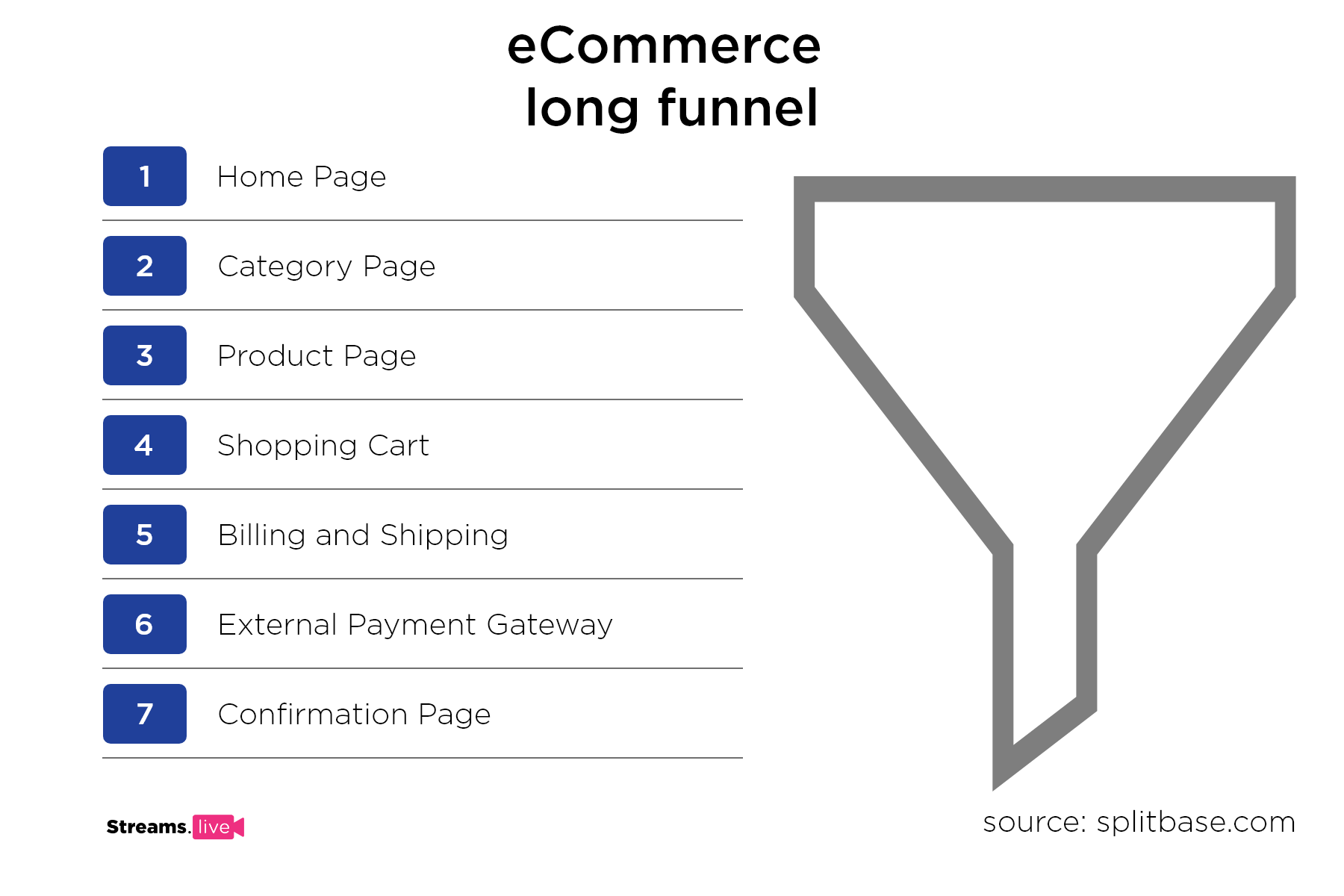
As most products are added to the cart from product pages only, one of the first battles need to win is customers actually landing on the product pages. And video commerce does exactly that, allowing customers to add products to their shopping cart straight from the live experience. With a click-through of close to 75%, this engaging experience helps your customers get familiar with your products without having to navigate multiple pages of a website. This way, different friction points are eliminated from their journey and the entire experience is focused on the live interaction.
But the journey is not finished when the products are added to the cart. A study conducted by Invespcro shows that shopping cart abandonment can vary from 25% (on desktop) all the way up to 45% (on mobile). The main reasons for this happening are:
High shipping costs
Long delivery times
Shopping cart design/functionality issues
Customers looking for a discount code
In our experience, offering a unique discount for customers attending a live stream shopping session will have a significant impact on the overall conversion rate. 80% of surveyed millennials said they feel encouraged to make a first-time purchase when a special deal or discount is available, making it one of the most important drivers of new business with a brand.
Going back to our example, ending the live experience with a one-time deal like a discount, free shipping, or no-questions-asked money-back policy will encourage our young shopper to give you his business.
Final words
The shopping journey is a complex process, that helps customers move from the “I have never heard about your business” stage to the “I would love to do business with you”. It may seem that they are alone in this journey, but a brand’s mission is to accompany them throughout the whole process, making sure they can easily find answers to all of their questions.
By using live video commerce, brands can shorten this complex process and add a human face to the whole experience. After all, commerce was and will forever be a human-to-human interaction, where the need of one is fulfilled by the products (and/or services) of others. It’s an interactive journey and live video commerce will help you better connect with your customers.





